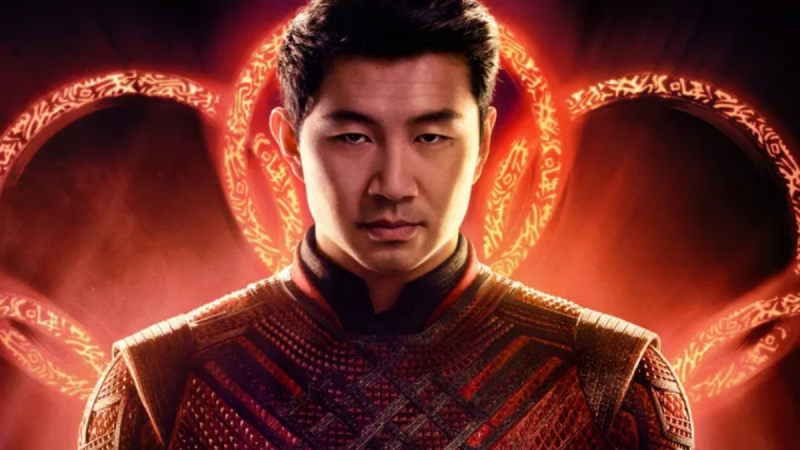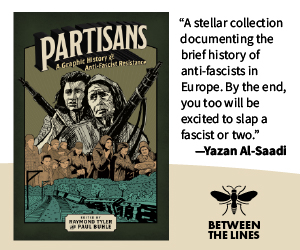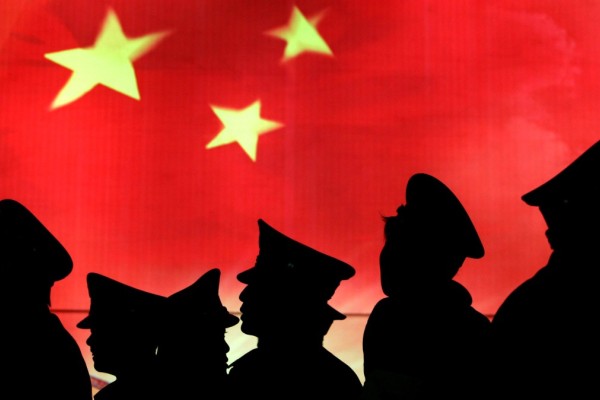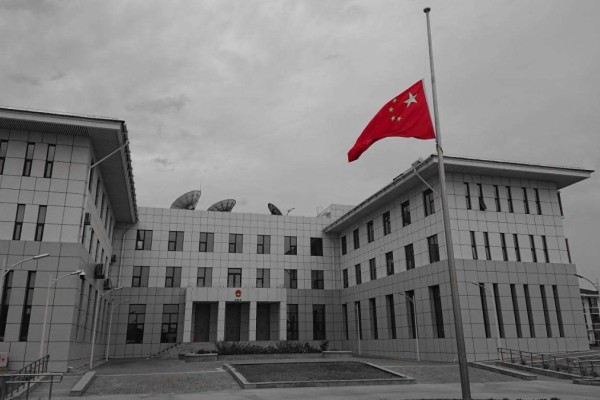‘Shang-Chi’ and the politics of liberal representation
With its latest film, Marvel tried to wipe away its own racist origins. Did it succeed?

A dive into Marvel’s Shang-Chi reveals weaving histories that bring to question the limits to liberal representation and its expressions in the film industry today. Image courtesy Marvel Studios.
“A fantasy of inclusion is a technique of exclusion.”
—Sara Ahmed
Shang-Chi and the Legend of the Ten Rings, directed by Destin Daniel Cretton and released in September, is the 25th addition to the immense Marvel Cinematic Universe. The film stars Mississauga-raised Simu Liu as the titular character, Hong Kong cinema legend Tony Leung, Malaysian Chinese star Michelle Yeoh, and American actress, rapper, and comedian Awkwafina.
The film’s diasporic achievements in representation, both in its cast and crew, are remarkable considering the long history of anti-Asian racism in the Western film industry. Shang-Chi’s Asian identity is international, it is undeniable, and unfortunately, it is unwieldy.
A dive into Shang-Chi’s constituent parts reveals weaving histories that bring to question the limits to liberal representation and its expressions in the film industry today.
Representations past
Longueuil, Québec. Early 2000s. I am standing outside of a Blockbuster store with my immigrant father. I must be around nine or ten years old. We are waiting for my mother who is inside renting a movie. As we stand patiently, a mother and her child walk past, hand in hand. The child catches a glimpse of my father. His eyes widen. He starts tugging at his mother’s sleeves excitedly, pointing straight at my dad. The boy is starstruck.
“Mom, look! It’s Jackie Chan!”
Of course, the child was enthralled that Hong Kong director, martial artist, and singer Jackie Chan was in Longueuil, waiting with his son outside of a video rental store.
He had no clue that my father was actually born in Tibet and couldn’t speak a lick of Cantonese.
The child’s mother wasn’t aware of the precise scale of her son’s errors but she knew enough to be sure that my father was not in fact Jackie Chan, and was embarrassed accordingly.
Chan, born Chan Kong-sang in Hong Kong in 1954, was by a large margin one of the most familiar Asian faces on the silver screen given his decades-long filmography, not only as an actor but as a director and producer. The child likely got to know Chan through his numerous action comedies or maybe even his animated kids’ show.
My father reminded this child of the film star because Chan stood as one of the only reference points for an entire continent’s people in Western media in the early 2000s.
Little more than a decade later, an oasis revealed itself to me amidst the desert of Asian representation: Glen Rhee, a major character in AMC’s blockbuster post-apocalyptic series, The Walking Dead, portrayed by Hollywood newcomer and Korean-American Steven Yeun. Glenn stood out for how unassuming he was, and how he seemed regular compared to other depictions of Asians in films and television shows.
I even dressed up as Glenn for Halloween, dealing with the Short Round comparisons that inevitably came up. For his part, Yeun sought to distance Glenn’s costume design away from the larger-than-life caricatures of the larger-than-life Indiana Jones series.
Short Round, portrayed by Vietnamese-American actor and stunt choreographer Jonathan Ke Quan, in Indiana Jones and the Temple of Doom.
“There’s a reason why the first costume designer had me wear Short Round clothes,” said Yeun in an interview with Indiewire. “That’s not maybe on purpose because she was like, ‘I want you to be Short Round.’ But she was relying on the systems that she knew, and the images and ideas that she knew of what Asian people are to her.”
‘Short Round clothes’ are punctuated by two distinguishing articles of clothing. Both mark a melding of old and new Chinese identities.
The first is his traditional chángshān, a Manchu equestrian jacket but with a straight collar, also known as a “mandarin or Mao collar,” adopted by the Han rulers of China. Short Round’s was made from a common brown fabric rather than the more imperial silks. The chángshān represents Short Round’s Chinese origins.
The other distinguishing article is the character’s 1928 New York Giants baseball cap: a symbol of Short Round’s American future juxtaposed against his ‘foreign’ past. His image was authored not by Asians but by the white writers who named the character after their dog. Short Round would eventually receive a human name, Wan Li, some 12 years after the movie’s release in an Indiana Jones book made for a role-playing game.
Shang-Chi
Shang-Chi’s release comes six years after #OscarsSoWhite brought global attention to the rampant overrepresentation of white men in the Academy Award nominations, as well as the underrepresentation of Asian, Latinx, and Indigenous people in the American film industry.
Despite the distaste expressed towards Marvel films by notable Western filmmakers including Ridley Scott, Martin Scorsese, and Denis Villeneuve, Shang-Chi stands out from its formulaic siblings by enlisting a diverse cast and crew.
These efforts notwithstanding, Shang-Chi is at best an entertaining action flick, and at its worst, the film reproduces many different orientalisms in spite of its diverse crew.
Shang-Chi’s shortcomings begin with its source material and the titular character’s father—the supervillain Fu Manchu, a comic book icon born out of British yellow peril.
Shang-Chi’s comic book debut was in December 1973 following the massive success of Enter the Dragon (1973) starring California-born Bruce Lee. Marvel, hungry to capitalize on the popularity of the martial arts genre, utilized their rights to English writer Sax Rohmer’s infamous Fu Manchu novels. The series was enjoying renewed public interest given the popularity of the film adaptations starring knighted actor Christopher Lee as its titular character.
Christopher Lee as Fu Manchu in The Face of Fu Manchu, a 1965 thriller film directed by Don Sharp and based on the characters created by Sax Rohmer. Image courtesy Constantin Film.
Fu Manchu was the antagonist of the series that had nothing to do with martial arts. Sax Rohmer was the pen name of Arthur Henry Ward. He started writing the series after he had asked a ouija board how to find success. According to Rohmer, the ouija board responded C-H-I-N-A-M-A-N. Rohmer would go on to be one of the most financially successful authors of the 1920s and 30s.

The Rohmer novels were born in the halcyon days of the British Empire, and carry with them the racist paranoia of that period.
The character of Shang-Chi first appeared in The Hands of Shang-Chi: Master of Kung Fu in 1974, a comic designed to be a direct sequel to the Fu Manchu novels that Marvel would briefly enjoy the rights to before the Rohmer estate’s reclamation. Shang-Chi was written to be the son of Dr. Fu Manchu, struggling to overcome his father’s evil ways.
Can Destin Daniel Cretton overcome Shang Chi’s difficult history?
Representations present
One of the key challenges facing Kevin Feige, the primary producer of the Marvel Cinematic Universe franchise since 2007, was whether or not he could disentangle Shang-Chi from his lineage enough to form a clean, sterilized product to sell to Western audiences as well as the burgeoning Chinese film market. Chinese moviegoers accounted for 22 percent of global sales for Avengers: Endgame (2019), Marvel’s highest-grossing film and the second highest-grossing film of all time.
Some Chinese critics were quick to point to the history of yellow peril in the franchise. In the words of Beijing-based film critic Shi Wenxue, “Chinese audiences cannot accept a prejudiced character from 100 years ago is still appearing in a new Marvel film.”
Marvel is no stranger to criticism when it comes to the treatment of Asian characters in their possession, and the company has repeatedly come under fire for whitewashing Asian characters, including casting Tilda Swinton in the role of the Ancient One, a Tibetan character, for the 2016 film Doctor Strange.
Shang-Chi’s crew attempted to reform the franchise by scrapping Fu Manchu and replacing him with a composite character named Wenwu, played by Tony Leung. Wenwu addresses the old figure of yellow peril, Mandarin, as a creation of Western fear. Here, the history of Marvel’s anti-Asian racism is addressed and commented on, but it is not washed away. The prosthetics and facial hair of Christopher Lee’s offensive caricature might be gone, but the history remains. Why wasn’t another character chosen?
Marvel has an extensive library of existing licensed characters, numbering in the thousands, and multiplying to tens of thousands if one-offs are counted. This database acts as a resource and the raw narrative material that keeps its Fordist film production chugging.
Despite Marvel’s massive catalogue, however, only some 50 characters are Asian. In its quest for quick turnovers and continued box office success, some racist history has been unearthed with Shang-Chi. The film’s crew, along with American cartoonist Gene Luen Yang, the new writer of the Shang-Chi comic series, attempts to reform and rehabilitate these old caricatures, giving new life to old representations in Marvel’s library.
The challenge is met by Yang and Cretton with optimism.
In an interview with Syfy, Yang, noted the marked rise in anti-Asian hate crimes in the United States.
“Asian-Americans are often treated as perpetual foreigners, as outsiders, and as two-dimensional,” he said. “We want our story to present Shang-Chi as a three-dimensional hero with human wants, human fears, and human needs. We want him to be relatable to any reader from any background, to counteract that ugliness.”
Cretton’s commentary on his role in bringing forward more representation for Asian Americans is equally wide-eyed. He told CNET:
This is the time for this movie to come out. Not because the movie itself is political or trying to make a big point. But I do think movies like this, exposure like this, to a culture you have never been exposed to and characters, if you have never hung out with an Asian dude or girl, it’s so easy to have a preconceived notion about them. But hopefully, after seeing a movie like this and hanging out with Shang-Chi and Katy and Xialing and Wenwu and Jiang Li, you will have a connection to these faces that you may not have otherwise.
The antagonistic force of racism to Yang and Cretton is the ugliness of the old racist representations of Shang-Chi. They both leave intact Shang-Chi’s name, itself a made-up approximation of a Chinese name. Behind the fake names and reformed representations are real people.
Over the past year alone, Vancouver saw a 717 percent rise in anti-Asian hate crimes, while Montréal’s Chinatown, the last one standing in Québec, has experienced a recent wave of vandalism against its statues and cultural centres.
Indeed, real people are caught in the crosshairs when Sinophobia rears its ugly head.
Yang, Cretton, and others, in their roles as as authors and producers, have attempted, perhaps bravely, to address racial struggle through representation with a blockbuster like Shang-Chi. In a riveting essay on the limitations of Asian American media representation, WJ Fong argues that it is “merely a salve which cannot remedy the actual cause of our alienation.”
Fong’s essay is a sharp deconstruction of representation as it exists within neoliberal capitalism. Fong argues that films like Shang-Chi can never be revolutionary because of their reliance on old depictions of power.
Today, as Canada-China relations continue to broil, I wonder how I will continue to be perceived? Could I be mistaken as an enemy combatant? Might I be forced to label myself to avoid harm as Chinese Canadians did during this country’s internment of Japanese people during the Second World War.
In the same way that my father was mistaken for Jackie Chan, if I or others who share my physiogony are mistaken for Shang-Chi, then I agree that the film is not revolutionary, but at the very least it might be harm reduction.
Kalden Dhatsenpa is a Tibetan writer and artist based in Tio‘tià:ke, or Mooniyang, or Montréal, and a member of the Canadian Dimension editorial board. He is the national anti-oppression coordinator for Courage, host of the film podcast Cheapy Tuesdays, and a former federal candidate for the NDP in Longueuil—Charles-Lemoyne.










